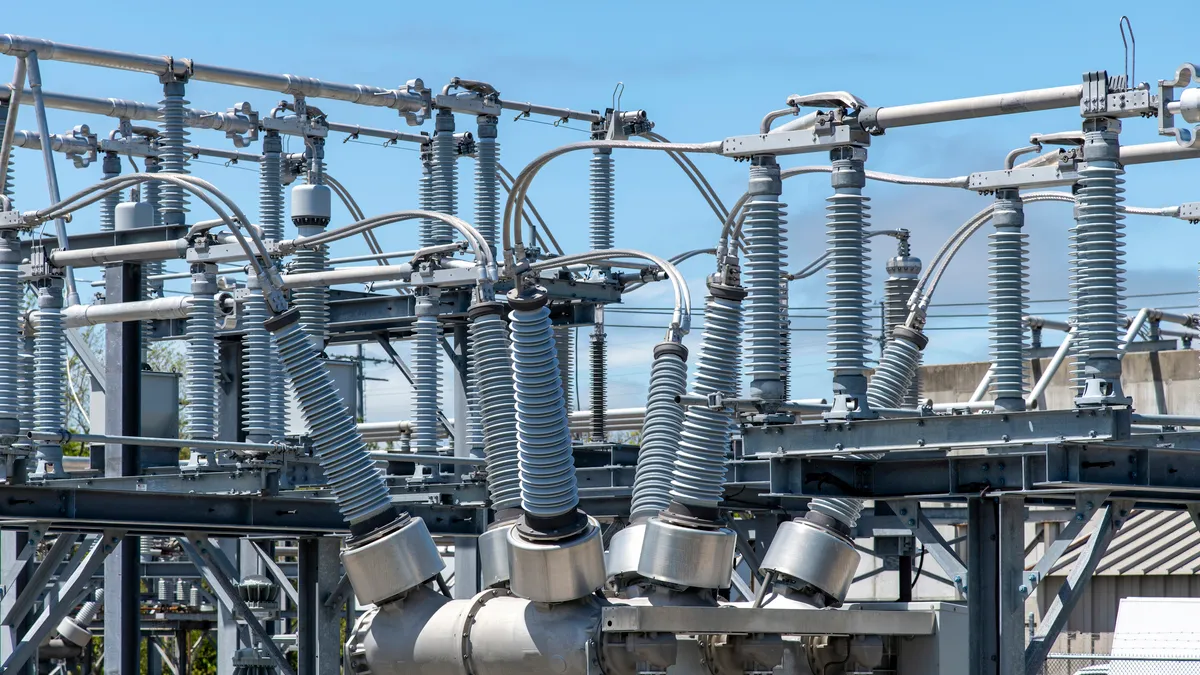“High probability” planned data center load in Exelon’s service territory jumped to 11 GW from 6 GW earlier this year, according to Calvin Butler, Exelon president and CEO.
The surge in potential data center load comes as Exelon and its utilities are dealing with major grid issues — including resource adequacy in the PJM Interconnection, potential co-located load at nuclear power plants and transmission development, Exelon officials said during an earnings call with analysts on Wednesday.
“The importance of the grid reinforces the value of coordinated, thoughtful and efficient investment and thus, the benefit of transparent, forward-looking planning and rate making,” Butler said. “It has driven our focus to ensure co-located load arrangements do not compromise reliability or avoid the cost of relying on the grid.”
PJM’s request for permission to delay a December capacity auction reinforces questions about whether a jump in capacity prices is efficiently attracting new generation and “sends a clear message that [market] reform is definitely needed,” Butler said. It is also a sign that the PJM stakeholder process is not working, he said.
“We’ve been working with all of our governors and regulatory bodies on how to address this issue and what needs to be done,” Butler said. “You’ve seen the magnification of this issue … with the letter that the governors most recently sent to PJM stating that something needs to be done not tomorrow but today.”
Some deregulated utility companies want to get back into providing power, an analyst on the call noted. “If that’s part of the solution, we’ll be at the table figuring how that happens, but we’re not advocating for that,” Butler said. “What we’re advocating for is reliable and affordable energy.”
Exelon supports PJM developing a pathway to help shovel-ready generation projects come online quickly, according to Colette Honorable, Exelon executive vice president for public policy and chief external affairs officer.
Maintaining a “reliable, resilient and affordable” grid requires investments, according to Butler.
Exelon expects to spend $34.5 billion on capital investments over four years starting in 2024, including $21 billion on electric distribution and $9.7 billion on transmission, according to an earnings presentation.
“There’s a cost of not making these investments because all of our jurisdictions have a clean decarbonization goal … and you can’t get there without investing smartly in transmission,” Butler said. “The cost of not doing it far outweighs the cost of just systematically doing it.”
However, the investments require “upfront” conversations with utility regulators, according to Butler. Exelon supports multi-year rate plans, which are being opposed by ratepayer advocates in some states, Butler said.
Exelon seeks clarity on co-located loads
Meanwhile, Exelon aims to ensure that data centers and other loads co-located at power plants pay for their share of grid costs, according to company officials.
Exelon and American Electric Power challenged a Talen Energy agreement for an Amazon Web Services data center at a nuclear power plant in Pennsylvania. The agreement, filed at the Federal Energy Regulatory Commission, was the first-ever declaration that the co-located load was not network load, which implies that it would bear no share of the cost of services associated with being part of the grid, according to Butler.
“We are happy that FERC stepped in and initiated a technical conference … because we do not believe that policy should be determined by one-off contracts, Butler said.
Separately, Exelon’s Baltimore Gas & Electric and PECO Energy subsidiaries filed proposals at FERC to change their tariffs to account for data centers and other load co-located at power plants. The utilities asked FERC to respond by early December.
“We needed that because we were being asked to do things that were contrary to the support and the reliability of the grid, and we cannot have the cost, the potential cost shifting to other customers,” Butler said.
Co-located data centers will affect the grid by using ancillary services, potentially requiring upgrades for the existing facility and taking existing generation off the grid, according to Mike Innocenzo, Exelon executive vice president and chief operating officer.
“Our whole position has just been — if they can co-locate, if they can get in there quick and get in there doing what they want to do, we support that,” Innocenzo said. “We just want to make sure that it has the appropriate transparency on what they are doing. We want to make sure that we have the appropriate studies done to make sure that we are addressing resource and reliability adequacy currently, and we also want appropriate rate design to be able to cover for those costs.”
On the financial front, Exelon’s third-quarter net income increased to $707 million from $700 million from the year-ago period as its revenue climbed to $6.2 billion from $6 billion. “Overall solid results with the financial execution appearing on track or marginally ahead of plan for the year,” Jefferies analysts said in a note Wednesday.






















